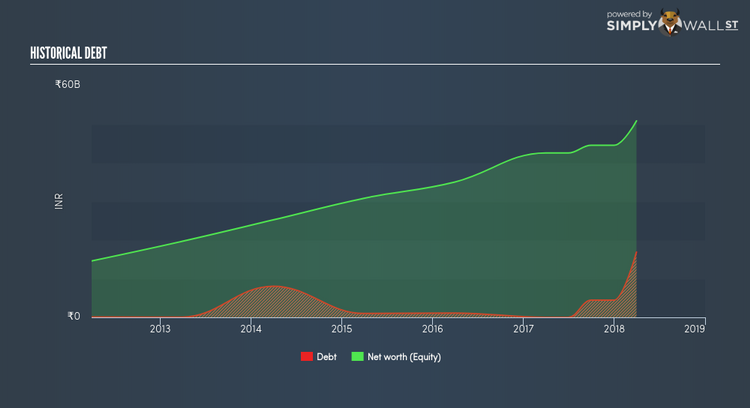Titan Company Limited (NSE:TITAN): Time For A Financial Health Check

There are a number of reasons that attract investors towards large-cap companies such as Titan Company Limited (NSEI:TITAN), with a market cap of ₹834.16B. Risk-averse investors who are attracted to diversified streams of revenue and strong capital returns tend to seek out these large companies. However, the health of the financials determines whether the company continues to succeed. Let’s take a look at Titan’s leverage and assess its financial strength to get an idea of their ability to fund strategic acquisitions and grow through cyclical pressures. Note that this commentary is very high-level and solely focused on financial health, so I suggest you dig deeper yourself into TITAN here. See our latest analysis for Titan
How much cash does TITAN generate through its operations?
TITAN has built up its total debt levels in the last twelve months, from ₹1.10M to ₹16.91B , which is mainly comprised of near term debt. With this rise in debt, TITAN currently has ₹9.59B remaining in cash and short-term investments for investing into the business. Moving onto cash from operations, its operating cash flow is not yet significant enough to calculate a meaningful cash-to-debt ratio, indicating that operational efficiency is something we’d need to take a look at. As the purpose of this article is a high-level overview, I won’t be looking at this today, but you can assess some of TITAN’s operating efficiency ratios such as ROA here.
Can TITAN meet its short-term obligations with the cash in hand?
At the current liabilities level of ₹43.15B liabilities, it seems that the business has been able to meet these obligations given the level of current assets of ₹76.01B, with a current ratio of 1.76x. Generally, for Luxury companies, this is a reasonable ratio since there is a bit of a cash buffer without leaving too much capital in a low-return environment.
Does TITAN face the risk of succumbing to its debt-load?
With debt at 33.24% of equity, TITAN may be thought of as appropriately levered. TITAN is not taking on too much debt commitment, which may be constraining for future growth. We can check to see whether TITAN is able to meet its debt obligations by looking at the net interest coverage ratio. As a rule of thumb, a company should have earnings before interest and tax (EBIT) of at least three times the size of net interest. For TITAN, the ratio of 28.6x suggests that interest is amply covered. High interest coverage is seen as a responsible and safe practice, which highlights why most investors believe large-caps such as TITAN is a safe investment.
Next Steps:
TITAN’s cash flow coverage indicates it could improve its operating efficiency in order to meet demand for debt repayments should unforeseen events arise. However, the company exhibits proper management of current assets and upcoming liabilities. I admit this is a fairly basic analysis for TITAN’s financial health. Other important fundamentals need to be considered alongside. I suggest you continue to research Titan to get a better picture of the stock by looking at:
Future Outlook: What are well-informed industry analysts predicting for TITAN’s future growth? Take a look at our free research report of analyst consensus for TITAN’s outlook.
Valuation: What is TITAN worth today? Is the stock undervalued, even when its growth outlook is factored into its intrinsic value? The intrinsic value infographic in our free research report helps visualize whether TITAN is currently mispriced by the market.
Other High-Performing Stocks: Are there other stocks that provide better prospects with proven track records? Explore our free list of these great stocks here.
To help readers see pass the short term volatility of the financial market, we aim to bring you a long-term focused research analysis purely driven by fundamental data. Note that our analysis does not factor in the latest price sensitive company announcements.
The author is an independent contributor and at the time of publication had no position in the stocks mentioned.

